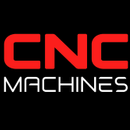2024 CNC Price Guide: Revolutionizing Machine Valuations

2024 CNC Price Guide: Revolutionizing CNC Machine Valuation
The ultimate resource for CNC machine pricing has just been released: the 2024 CNC Price Guide by CNCMachines.com. This indispensable tool is the CNC machine industry's equivalent to what Kelly Blue Book is for cars.
Why is this important? Historically, manufacturers have faced significant challenges in determining fair prices for both new and used CNC machines. The opaque nature of the market made it difficult to make informed decisions. This is where the CNC Price Guide changes everything.
Historical Challenges in CNC Machine Valuation
The lack of transparent pricing data has long been a pain point for the CNC industry. Manufacturers would rely on gut feelings, haphazard dealer quotes, or limited auction results. This created inconsistencies and inefficiencies, making it difficult to gauge fair prices for CNC machines, whether new or used.
CNC Machine Price Tool - Price Out Your Machines Free (cncmachines.com)
CNCMachines.com Pioneers a Solution
Enter CNCMachines.com, which launched its groundbreaking CNC Price Guide at the International Manufacturing Technology Show (IMTS) in September 2018. This user-friendly, one-page application was the industry's first comprehensive tool for machine valuation, offering insights on both retail and wholesale pricing.
The initial version of this price guide aggregated data from numerous transactions, giving manufacturers unprecedented access to pricing insights. CNCMachines.com had achieved what was previously thought impossible — creating a 'blue book' specifically for CNC machines.
The 2024 Newest Edition: Enhanced Features
The 2024 CNC Price Guide brings even more value. With new features such as past sales comparisons and total days on the market, manufacturers can now see not only the price range but also the time it typically takes to achieve their desired price. This level of detail provides a deeper understanding of market dynamics.
The latest version also includes user-friendly charts that further simplify the decision-making process. You can visualize the fluctuations in machine prices over time and understand seasonal trends, empowering you to make data-driven decisions.
CNC Machine Price Tool - Price Out Your Machines Free (cncmachines.com)
Unlock the Future of CNC Machine Valuation
If you’re in the market for buying or selling CNC machines, the 2024 CNC Price Guide by CNCMachines.com is an indispensable resource. This revolutionary tool brings transparency, accuracy, and efficiency to an otherwise opaque market.
Don’t miss out on this essential guide. Click here to explore the 2024 CNC Price Guide now.



